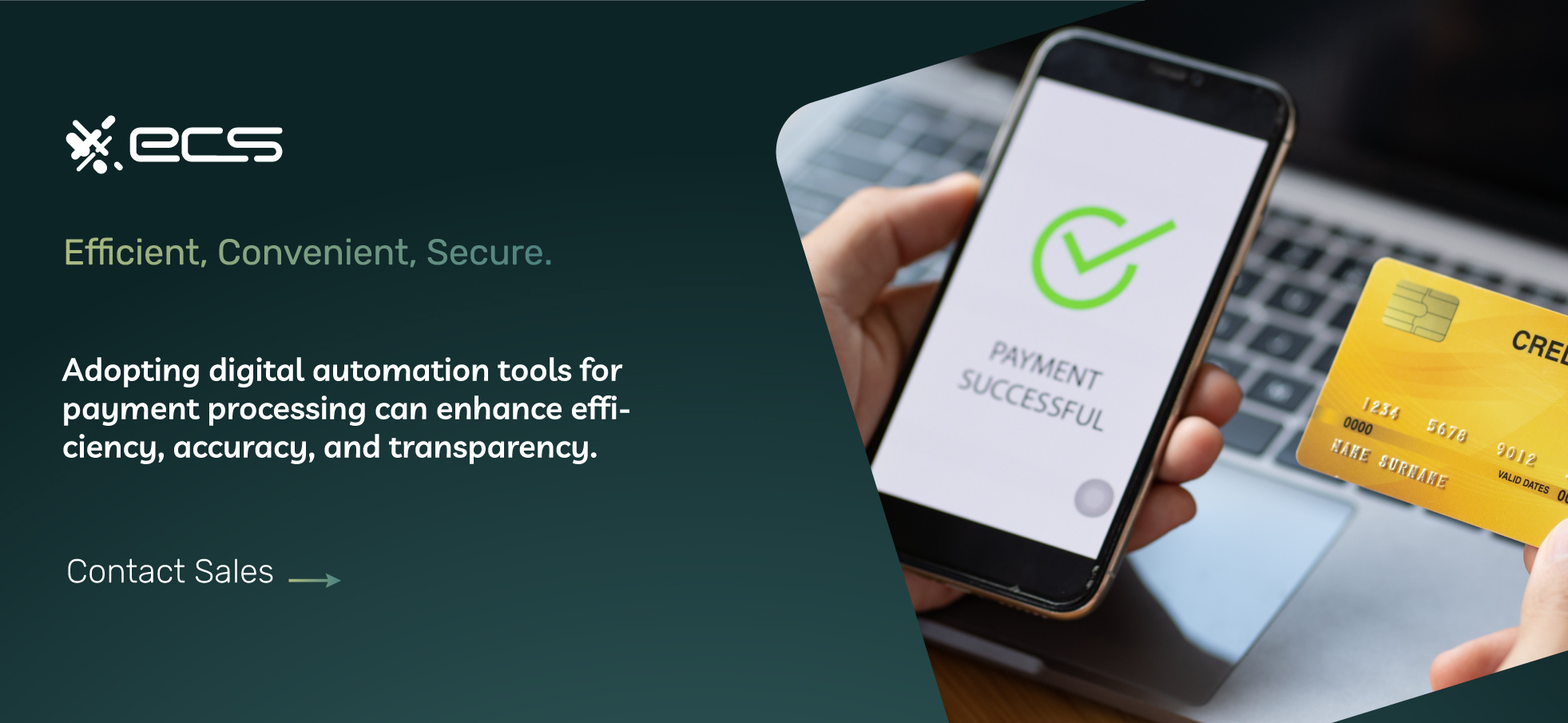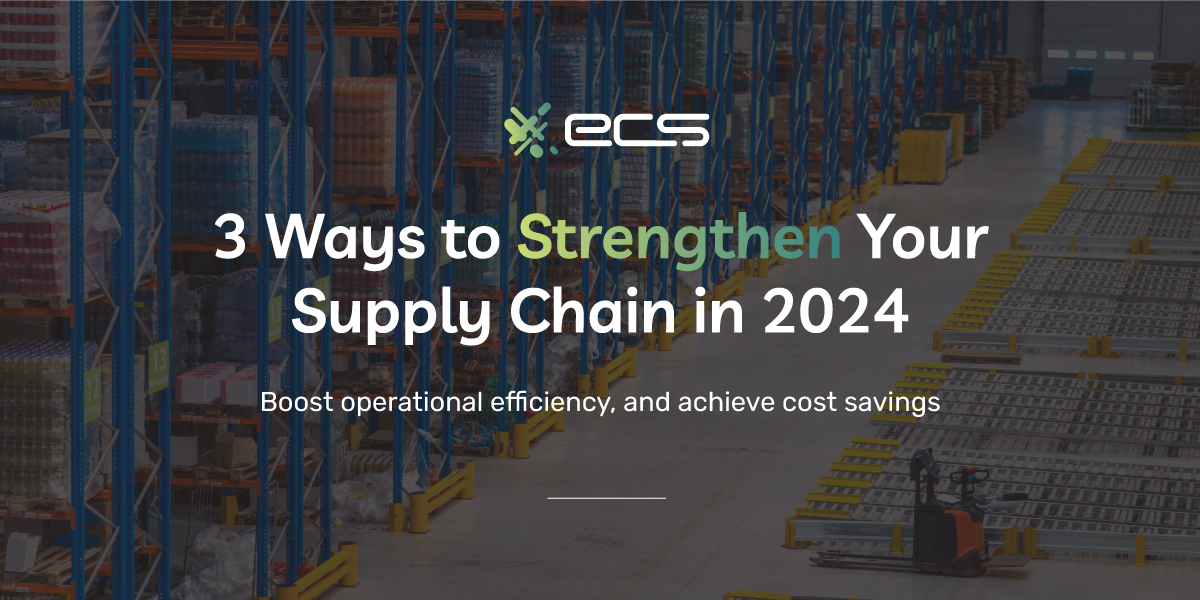In the wake of the post-COVID-19 pandemic environment, supply chains have become a central concern for businesses and their consumers. The pandemic threw many companies a curveball. varying impacts on different industries. Some industries rebounded rather quickly, while others lagged or faced difficulty due to shifting consumer behavior.
Some resilient businesses that experienced growth during the pandemic found themselves overextended when restrictions started to ease and people started returning to their regular activities.
While many of these issues have started to ease, supply chain problems are still a primary concern, and the overall outlook shows supply chains are functioning but fragile.
This means that business owners still need to prioritize their logistics infrastructure and look for ways to strengthen their overall supply chain strategy.
Businesses that shore up their supply chain and manage their logistics efficiently will experience a significant competitive advantage over those that don’t. They’ll also experience increased overall efficiency and lower operating costs, which further compounds their advantage.
To help your business navigate this issue and build a better supply chain, we’ve outlined three key ways to strengthen your supply chain in 2024.
How To Solve Supply Chain Problems
A wise first step toward solving supply chain issues is to first clearly identify the problems that exist. This will include problems you are aware of as well as uncovering issues you may not be aware of that pose a risk.
The best way for your business to do this is to perform a supply chain audit. A supply audit allows your business to examine its entire supply chain from the procurement phase until final delivery to help find cost-effective improvements.
Your goal during this audit is to identify all supply chain problems and risks. You will then develop the strategies required to solve the issues and minimize the risks as much as possible.
Finally, you will use the audit to implement improvement initiatives across all business operations related to your supply chain management.

Determine The Scope And Goals of Your Supply Chain Audit
To begin your audit process, you want to define the scope of the audit clearly. For a smaller business with only one or two suppliers, the scope can be somewhat limited, and the audit will have fewer overall goals.
However, more complex businesses can have an audit covering multiple suppliers, vendors, and logistical operations. For these situations, the scope will need to cover a wider area.
You can limit the scope in more complex shipping situations by determining precisely where the most problems and risks exist. By focusing your audit on these areas, you can tackle your most costly problems first to help with your overall supply chain management (SCM) strategy.
Key Objectives During A Supply Chain Audit
Regardless of the scope of your audit, you will have several key areas to focus on during your supply chain audit. Focusing on these areas will help you understand how to improve supply chain reliability.
Efficiency
Your main goal and objective should focus on improving supply chain efficiency. Your audit should look for waste and bottlenecks as the main culprits. Wastes can occur anywhere in your supply chain, including internal processes.
Bottlenecks should be easy to spot by analyzing past data to determine which areas experienced the most significant delays.
Risk Management & Mitigation
Once you have identified existing problems, it’s time to look for risks that become problems if not addressed. A risk in your supply chain is anything currently functioning normally, but a slight disruption could cause a ripple effect.
Some risks can involve security, such as your data security and cyber threats. Another possible risk is demand volatility. If the market demand for a raw material you need suddenly spikes, do you have a contingency in place to deal with it?
A sudden increase in raw material prices can hurt bottom lines. Other risks you have to deal with may be beyond your control—for example, geopolitical conflict. However, you will still need to identify the risk and formulate a contingency for the most likely scenarios over the next year.
Compliance
You’ll also want to consider your compliance with legal and regulatory frameworks impacting your business. For some businesses, this could involve international regulations, which makes things more complex.
Overall, non-compliance can be a risk factor for your supply chain if it can cause disruptions due to inspections, fines, or loss of shipments.
Customer Experience
Last but not least is your overall customer experience as it relates to your supply chain audit. How often are your customers impacted, and how can you offer solutions? Are your customers voicing concerns related to supply chain issues?
You want to ask yourself these questions to determine what remedies can improve the overall customer experience when unforeseen supply chain issues arise.
Three Supply Chain Improvements
After you’ve performed your supply chain audit, you’ve likely identified several problems that need fixing. Every business will have different issues, but they will share common top-level solutions.
Below, we will discuss three specific supply chain improvements that can address most problems and risk factors businesses face.
1. Diversify Your Supply Chain
Like investing, diversification is the key to risk mitigation for your supply chain. Many supply chain managers will already have several regional suppliers they work with. This is a good start when it comes to diversifying your supply chain.
To expand, you also want to look into multi-shoring options. This opens up your pool of suppliers to a much larger area. Even if a strike or work stoppage affects your regional partners, offshore suppliers will continue to operate.
The opposite is also true. Global unrest may impact your offshore suppliers, therefore regional partners can fill in the gaps. While you diversify, you also want to research your current suppliers and the suppliers you want to add to your supply chain.
You’ve already determined your risks during your initial audit, and now you want to determine the risks to your suppliers. You can Identify the same areas of concern as when you identified your business’s risks.
For example, is one of your leading suppliers located in a volatile area? Have they had compliance issues with their government or other agencies?
Identifying risk factors for your supply partners will help you better diversify by not choosing multiple partners who share a common risk.
Your diversification strategy shouldn’t involve randomly choosing new suppliers. Instead, it would help to choose suppliers with different resiliency to different risk factors. Using this strategy, one or even two risk events won’t disrupt your entire supply chain.


Diversification As An Investment
We mentioned how diversification and investing are similar. In supply chains, diversification often has no immediate benefits. But you must pay for that investment because diversification costs money and resources. Therefore, you will want to determine a budget and ensure that your diversification efforts are worthwhile investments.
Depending on your budget, you may want to prioritize various diversification initiatives over others. Look for your most significant supply chain problems and risks and find diversification strategies that address the most issues.
You can never eliminate all risks, but addressing your most significant issues is sufficient to minimize disruptions and smooth out their impact on your business.
2. Use Hybrid Supply Chain Strategies
Until recently, many businesses worldwide used a single supply chain strategy. Most often, this was some variation of just-in-time (JIT) delivery. From a cost perspective, JIT makes a lot of sense. JIT ensures that your inventory spends minimal time in storage, and it prevents money from being tied up in inventory that simply sits on shelves.
But recently, many businesses found out the limits of JIT when supply shocks happened. Inherently, JIT has very little redundancy. When a source is knocked out, the entire supply chain gets impacted.
Most of the supply chain issues over the past few years have been the result of this lack of redundancy in singular supply chain strategies like JIT. This has led to a shift away from singular strategies based around JIT and a move toward more hybrid strategies.
Every industry, including those from fashion and automotive, is now utilizing hybrid strategies. The goal is to bring the best of both strategies to a business’s supply chains. Combining the cost-saving benefits of JIT with the supply shock mitigation of a just-in-case JIC strategy enhances overall efficiency.
Differentiating Your Products
Part of a hybrid supply chain strategy can start with separating your products. Focusing on made-to-order products and build-to-stock items helps you to better manage your overall inventory.
Separating your products allows you to apply different supply strategies to each, creating efficiencies and a more custom approach. Each of these types of products will have different inventory requirements.
The downside is that you must manage two slightly different supply chain methodologies. However, by removing overlap and redundancies between the two, you can keep this to a minimum and reap the overall benefits.
Combine Lean & Agile Strategies
JIT is a strict lean methodology where cost savings are paramount. This can still be appropriate for some areas of your supply chain. You also shouldn’t ignore lean strategies where they still make sense.
For example, if a supplier is local, you can likely afford to use a lean approach as the risk of disruption is low.
Agile strategies, on the other hand, are more focused on dynamic adjustments that allow your business to react quickly without downtime or customer disruptions.
Moving Operations In-House
In hybrid supply chains, organizations must decide which operations to bring in-house and which to delegate to external vendors or suppliers. Sometimes, it’s more advantageous to employ a network of manufacturers to partially complete products before they ship them to you for the final touches.
However, you may find cost savings in other cases by doing more basic fabrication or assembly in-house and then using a local vendor for final assembly or finishing. Each circumstance can provide its own benefit, and you want to decide which approach works best for your business and your customers.
Either way, the goal is to always save money while ensuring the most stable supply chain possible by combining lean and agile strategies where appropriate.
3. Demand Planning
Demand planning involves careful strategizing based on past historical data, current market trends, customer data, and your specific product lines. By analyzing this data, you can forecast demand fluctuations throughout the year and proactively increase inventories before they become necessary.
Much of the work for demand planning revolves around data, so you will need software to manage that data. Many businesses will use their existing enterprise resource planning (ERP) software. Most ERP software systems will include analytical modules to help with resource planning and forecasting. ERP vendors will consist of these modules or offer them for an additional fee.
Another option businesses are using is dashboard software. Dashboard software allows different departments within an organization to visualize internal and external data on their own.
Choose Your Data Sources
With your chosen analytical software in place, your next step will be investigating your data sources. For customer demand, you’ll use your internal data, which you’ll have available.
External data may be historical pricing data if you’re sourcing commodity goods or raw materials. Over time, your data sources may change, and you may refine your overall models based on accuracy and new data that emerges.

Typical Demand Planning Strategy
Demand planning will differ slightly based on what type of products they are sourcing. However, a common demand planning strategy will typically take the following form.
Preparing The data: This includes investigating your data sources and choosing which data sets to incorporate into your models.
Initials Forecasts: With the data now imported, you can start your initial forecasting. To begin, you will usually start with a sample forecast using smaller datasets to refine your models.
Market Intelligence: As you refine your initial forecasts using smaller data sets, you can use market intelligence analysis to improve your forecasting. Your market intelligence data can be competitor information and other outside data sources you’ve compiled.
Compare to Sales and Financials: As you start to round out your forecasting models, you can compare them to your overall sales goals and financial outlook. You can better budget and prepare for growth by overlaying your demand planning with financial and sales targets.
Final Modifications: With all your data and sources now implemented, you can make the final adjustments to your demand planning models. Your demand planning models will continue to be tweaked, but you should have a solid foundation to build upon.
Real-Time Analysis: You should have your demand planning up and running in its final form at this stage. Now is the time to compare them to real-time industry data and pricing to see how they perform. Continue to make adjustments to the model and your data sources as needed.
Overall, demand planning can be one of the more complicated aspects of supply chain improvement. Generally, a dedicated team of data specialists will work on such plans and models.
However, newer digital tools offer self-service data analytics and visualization. These are relatively low costs, and those without a formal data science background can use them.
For smaller businesses without the resources to prepare a full demand planning model, using a self-service business dashboard can be an option that yields sufficient results.
Solutions To Supply Chain Problems
Regardless of your situation, there will always be the risk of a supply chain problem. Sooner or likely, every business will have to deal with disruptions. The key is to have a plan in place to deal with those disruptions and solve the most common problems you may face.
This section will outline the basic steps to help you make supply chain improvements.
Identifying Risks
We already touched on analyzing risk during your supply chain audit procedure. But risk analysis should also be an ongoing task as new risks can emerge quickly in today’s environment.
With suppliers and vendors worldwide, events can unfold halfway around the world and directly impact your supply chain at home.
For example, labor disputes in countries where your products are manufactured can become a risk factor for your business.
Keeping tabs on these events can help you create contingencies before the problem impacts your supply chain.
Every Source Should Have A Contingency
The last thing you want to do is react to supply chain disruptions with a knee-jerk reaction. Even worse is if you’re caught in a situation where you can’t respond due to business constraints.
The best way to solve supply chain problems is to have a contingency before they happen. Every contingency will be different depending on the situation. But each supplier and vendor you use should have an alternative, as should shipping methods to get the materials to you.
Your contingency plans should also be evolving as risks and situations change. A contingency plan formed several years ago may not be relevant in today’s environment.
Leverage Digital Automation
Digital automation tools are more powerful than ever, and innovative businesses use them to solve supply chain challenges and improve efficiency.
For example, container tracking for intermodal shipping can give your business a real-time look into your shipments anywhere in the world.
You can then use this data to forecast delivery and lead times. You can also use this data to spot bottlenecks in your logistics. Automation can internally track your inventories and set them up for early reordering to allow sufficient time for delivery.
Work With Your Suppliers
Sometimes, we forget that our suppliers see us as customers, and they want to help solve our problems. By fostering strong supplier relationships, you can work together to find solutions when sudden disruptions occur.
When disruptions or unexpected risks happen in global supply chains, suppliers tend to take care of customers with whom they have the best relationship. If you’ve been out of touch with your suppliers, you may end up taking a back seat as they prioritize other customers first.
Building a solid relationship with all of your suppliers helps keep your needs at the forefront. It can also keep you apprised of changing conditions in the suppliers’ local area that may impact your business.
How To Build A Supply Chain
So far, we’ve talked about improving your existing supply chain. However, many new businesses need to set up their supply chain and may not know where to start or how to manage a supply chain.
Supply chain strategies can differ, but they will generally follow this template regarding supply chain planning and building.
Choose Your Inventory
As a business, you should know what you plan on carrying regarding products. You may be selling ready-made products, and therefore, you’ll be choosing finished goods to source. This is generally the easiest type of supply chain to work with.
Manufacturing or doing final assembly can make your inventory more complex. The goal is to simplify your supply chain as much as possible to increase efficiency and reduce costs.
One example is choosing an inventory that works with different SKUs and products. This way, you can reduce your sources and combine storage space when inventory arrives.

Demand Planning
We explained demand planning earlier, and now is the time to put it to use. As a new business, demand planning will be more complicated since you have less data to work with.
However, depending on your supply chain, you want to determine if it’s better for you to err on the side of too much demand or too little. If your supply chain has a long lead time, then you may want to avoid anticipating extra demand.
There is far less risk of underestimating demand if your products can be sourced quickly. As your business progresses, you’ll have more data to improve visibility into your demand planning models.
Start Your Purchases
After you’ve anticipated demand, you can start buying inventory as required. Depending on your business, you may want to place these buys all at once or stagger them as needed.
Stagger your customers’ orders so that components arrive as needed when manufacturing or finishing a product at your facility. Doing this will save you money and inventory space compared to ordering everything simultaneously.
Track Your Shipments
You will want to implement a robust system for tracking your shipments. Your vendors and suppliers should provide some of this tracking for you.
Next, we’ll discuss managing inventory by integrating your inventory system with your own shipment tracking system.
Track Your Inventory
Upon receiving your inventory, carefully track it internally as you use it for order fulfillment.
If you are selling finished products, you may want to use a third-party logistics provider. A third-party logistics provider receives your inventory for you and stores it. They can also fulfill orders and handle customer service issues like returns.
Audit Your Processes To Improve
Since you are setting up a supply chain from scratch, there will be kinks you’ll need to work out as you put it all in motion.
Keep an eye on your supply chain performance and note bottlenecks, added costs, and other inefficiencies that provide areas for improvement.
As you collect more data, your demand planning should also start to be more accurate, and you will no longer have to compensate for lead times as much. Instead, you should have a solid idea of exactly how much inventory you need to order.
The Future Of Supply Chains Beyond 2024
While much of the supply chain disruption of the past few years has started to subside, 2024 looks to have new challenges globally that could be a factor for new disruptions.
Two variables are always conflicts and global events. These circumstances can block vital shipping lanes. Conflicts and sanctions can also cause supply shocks as larger companies start to buy up remaining stockpiles of specific inventory.
Using some of the above strategies can minimize your risk related to these unpredictable events and help create a more effective supply chain for your business.
Frequently Asked Questions About Supply Chains
Consider how the pandemic caught businesses completely off guard. You want to avoid this at all costs for the future. Enhancing your supply chain ensures you have a competitive edge, improved efficiency, and cost savings.
Identifying problems starts with a supply chain audit. You must examine the entire process from procurement to delivery. This audit helps to uncover your issues, minimize your risks, and implement improvements across your supply chain operations.
You can strengthen your supply chain by diversifying your suppliers, adopting hybrid strategies, and planning demands. Diversification minimizes potential risks, hybrid strategies combine efficiency and flexibility, and demand planning helps anticipate market fluctuations.
